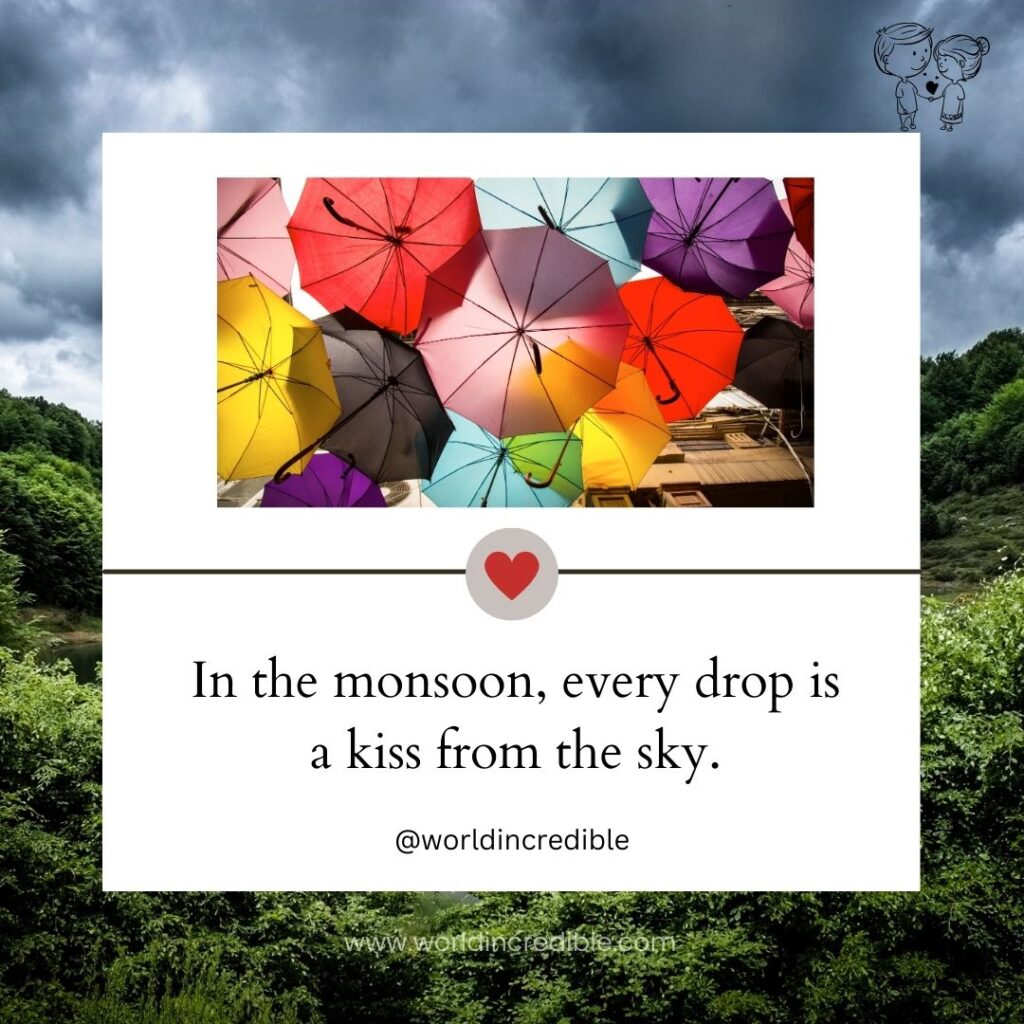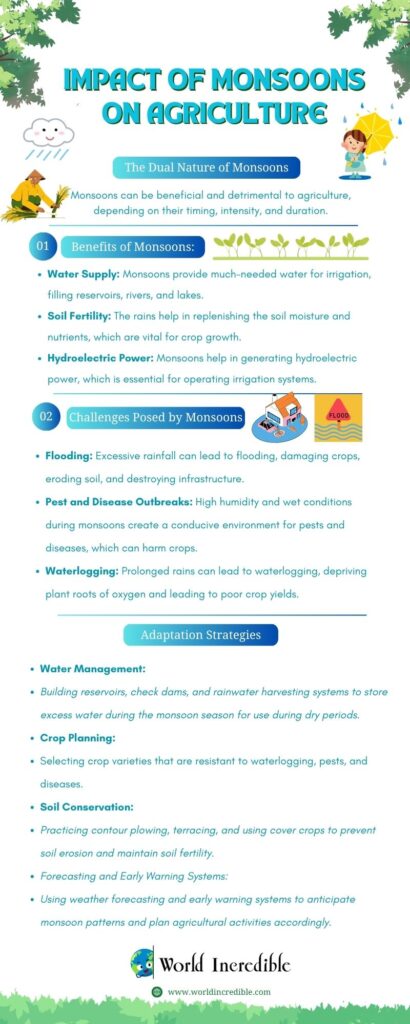Monsoons are a critical climatic phenomenon, especially in regions like South Asia, Southeast Asia, and parts of Africa. These seasonal winds bring with them heavy rains that are both a boon and a bane to agriculture. Understanding the impact of monsoons on agriculture is essential for planning, managing resources, and ensuring food security. Let’s delve into the multifaceted influence of monsoons on agriculture.
Monsoon Season Quotes
“Monsoon: nature’s way of cleansing the earth and soul.”
“The rhythm of the raindrops brings peace to the heart.”
“In the monsoon, every drop is a kiss from the sky.“

“Monsoon mornings bring the promise of new beginnings.”
“Under the monsoon sky, life feels renewed.”
“The monsoon whispers secrets to those who listen.”

“Rainy days make the heart feel alive.”
“Monsoon magic turns the world into a watercolor dream.”
“Embrace the monsoon; let the rain wash away your fears.“
The Dual Nature of Monsoons
Depending on their timing, intensity, and duration, monsoons can be beneficial and detrimental to agriculture.

Benefits of Monsoons:
- Water Supply: Monsoons provide much-needed water for irrigation, filling reservoirs, rivers, and lakes. This water is crucial for cultivating crops, especially in rain-fed agricultural regions.
- Soil Fertility: The rains help replenish soil moisture and nutrients vital for crop growth. Properly managed monsoon rains can lead to bountiful harvests.
- Hydroelectric Power: Monsoons help in generating hydroelectric power, which is essential for operating irrigation systems and other agricultural machinery.

Challenges Posed by Monsoons:
- Flooding: Excessive rainfall can lead to flooding, damaging crops, eroding soil, and destroying infrastructure. Floods can wash away seeds, plants, and fertile topsoil, leading to significant agricultural losses.
- Pest and Disease Outbreaks: High humidity and wet conditions during monsoons create a conducive environment for pests and diseases, which can harm crops.
- Waterlogging: Prolonged rains can lead to waterlogging, depriving plant roots of oxygen and leading to poor crop yields.

Regional Impact of Monsoons
The impact of monsoons on agriculture varies significantly across different regions.
South Asia: In countries like India, Pakistan, and Bangladesh, the monsoon season is crucial for the cultivation of major crops like rice, wheat, and pulses. A timely and well-distributed monsoon can lead to bumper harvests, while a delayed or deficient monsoon can cause droughts and crop failures.

Southeast Asia: Countries such as Thailand, Vietnam, and Indonesia depend heavily on monsoons for rice cultivation. The agricultural calendar in these regions is synchronized with the monsoon cycle, making the rains vital for food production and rural livelihoods.
Africa: In parts of East and West Africa, monsoons play a pivotal role in the agricultural sector. Regions like the Sahel rely on the West African monsoon for growing millet, sorghum, and other staple crops. However, irregular monsoons can lead to food insecurity and famine.

Adaptation Strategies
To mitigate the adverse effects of monsoons and maximize their benefits, farmers and policymakers adopt various strategies:

Water Management:
- Building reservoirs, check dams, and rainwater harvesting systems to store excess water during the monsoon season for use during dry periods.
- Implementing efficient irrigation techniques like drip and sprinkler systems to optimize water use.
Crop Planning:
- Selecting crop varieties that are resistant to waterlogging, pests, and diseases.
- Staggering planting dates to reduce the risk of total crop failure due to unpredictable monsoon patterns.

Soil Conservation:
- Practicing contour plowing, terracing, and using cover crops to prevent soil erosion and maintain soil fertility.
- Implementing integrated pest management (IPM) to control pest and disease outbreaks during the monsoon season.

Forecasting and Early Warning Systems:
- Using weather forecasting and early warning systems to anticipate monsoon patterns and plan agricultural activities accordingly.
- Providing timely information and support to farmers to help them make informed decisions.
Conclusion
Monsoons are a lifeline for agriculture in many parts of the world, providing essential water resources for crop cultivation. However, their unpredictable nature also poses significant challenges. By adopting sustainable agricultural practices and efficient water management strategies, farmers can harness the benefits of monsoons while minimizing their adverse effects. The future of agriculture in monsoon-dependent regions hinges on the ability to adapt to changing climatic conditions and ensure that monsoons continue to be a source of sustenance and prosperity.













